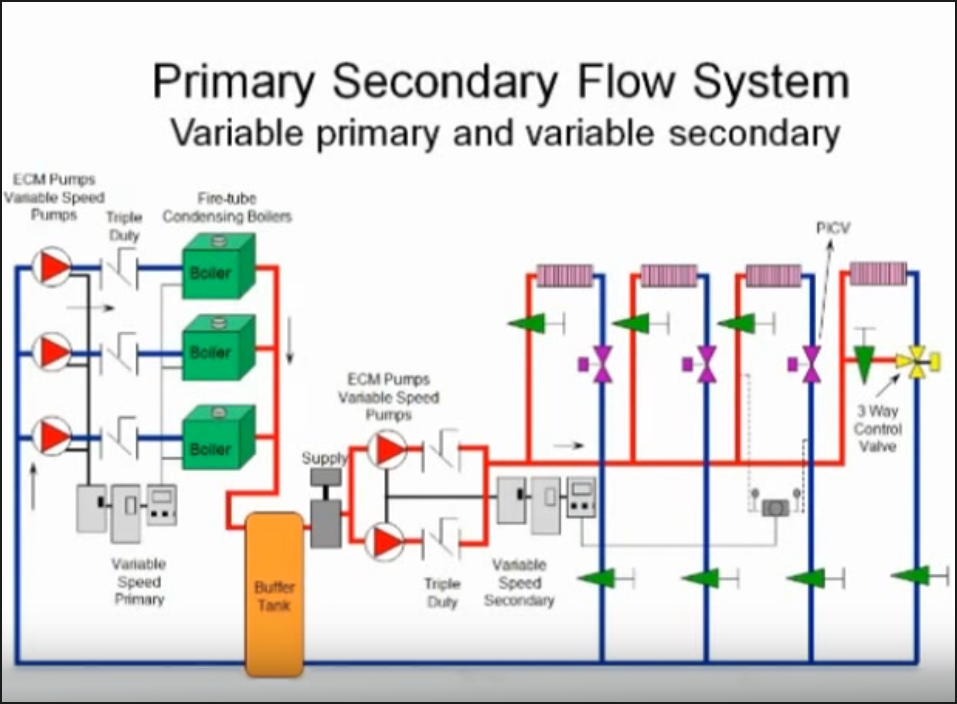Pump Motor Efficiency Requirements Part 2: Electronically Commutated Motors
/By Mark Bingham
Electronically commutated motors (ECMs) will play an important role in compliance with increasing motor efficiency requirements from the U.S. Department of Energy (DOE). But how do these motors differ from century-old direct current (DC) motor technology, and where do they fit into NEMA/IEC classifications?
Technically speaking, ECMs are DC motors in that both use a direct current to induce the motor shaft to turn. However, there are significant differences in the construction and commutation/switching processes.
What Makes ECMs Unique
Commutation, the reversal of current flow in an electrical system, is how motors achieve continuous rotation. Conventional DC motors use brushes and a mechanical commutator to switch the current to windings on the rotor, while the stator provides a continuous magnetic field. ECMs, or brushless motors, have an electronic controller that switches the current to the stator windings. When this switching occurs, permanent magnets located within the rotor respond to the rotating magnetic field created in the stator and cause the rotor to turn. The position and motion of the shaft are tracked by electronic sensing; this information facilitates the commutation of the motor.
Without brushes, the motors operate with less internal friction and heat and, as a result, are significantly more efficient and reliable.
Some special application ECMs have magnets on the stator and windings on the rotor. In either configuration, the controller adjusts the phase and amplitude of the current pulses, thus regulating the motor speed and torque. Some large ECMs are powered and controlled by a separate external controller.
Currently, ECM pumps, popular in many HVAC applications, are mostly limited to small circulator pumps— often no greater than one hp. However, there are some exceptions, including B&G’s ecocirc®, which goes up to three hp.
ECM Efficiency
ECMs are significantly more efficient and reliable thanks to the elimination of brushes and mechanical commutator. Another major contributor to the improved efficiency of ECMs is the elimination of “slip.” Slip is the difference between the synchronous speed (1800 rpm for a 4-pole motor) and the motor’s normal operational speed. For example, a 230/460 volt, three phase, 1800 rpm (synchronous) 5-horsepower Baldor Super-E (premium-efficient – IE 3 motor operates at 1750 rpm, whereas a five horsepower Baldor Electronically Commutated (EC) Titanium – IE5 runs at the synchronous speed of 1800 rpm.
General purpose ECMs in the current market operate at the International Electrotechnical Commission's IE-5 (ultra-premium) efficiency levels. (See Pump Motor Efficiency Requirements Part 1: A Three Decade Retrospective for efficiency classification definitions.) Baldor’s EC Titanium 380-480 Volt AC TEFC, 1800 rpm, five horsepower motor has a full load efficiency of 93.7%, whereas the premium efficient motor referenced above has a full load efficiency of 89.5%.
ECMs Excel at Part-Load HVAC and Plumbing Conditions
Part-load efficiencies are where the real savings are when it comes to HVAC and plumbing. Pumps in these applications spend most of their lives operating at part-load. The efficiency curves below from Baldor (other manufacturers should be similar) show the significant efficiency improvements of an IE-5 motor compared to an IE-3/NEMA Premium (the current efficiency requirement for most pump motors). Note the higher part-load efficiency of the Baldor’s EC Titanium in Figure 1.
figure 1. ec Titanium motor Part-load efficiency vs Induction motor efficiency. for pump and fan applications with variable speed and variable torque (load), ec titanium integrated motor drives have superior efficiency over induction motors at rated and partial load speed points.
New DOE Requirements for Circulator Pumps
In spring 2024, the U.S. Department of Energy (DOE) released the final federal standards for residential and commercial circulator pumps. As of May 2028, the new standard applies to circulator pumps and equipment manufactured in or imported into the United States. ECMs are the only currently available technology that allows manufacturers to meet these standards.
In the next blog, we'll examine larger permanent magnet pump motors, which are similar to ECMs in many ways.



